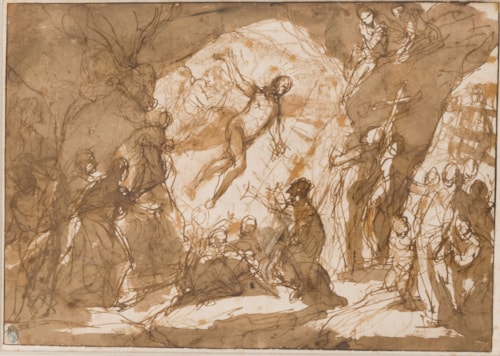
Alvise DEL FRISO
Verona 1544 - Venice 1609
Biography
A nephew of Paolo Veronese, who seems to have been his teacher, Luigi Benfatti was known as Alvise del Friso and entered his uncle’s workshop around 1562. He seems to have spent a relatively long time in Veronese’s studio - he is first listed in the registers of the Fraglia, the Venetian painter’s guild as ‘Alvise de Paolo Veronese’ and later as ‘Alvise Benfatto’ - and only began his independent career around 1584. Del Friso worked mainly in and around Venice, in a manner much indebted to the example of Veronese’s mature style. Among his significant works for Venetian churches is a cycle of scenes from the life of Christ for San Nicolò dei Mendicoli and a painting of Christ and the Centurion, signed and dated 1587, in the church of the Angelo San Raffaelle.
Del Friso also painted a series of eight canvases for the Scuola di San Fantin (today the Ateneo Veneto) in 1576, as well as a Last Supper in the church of Sant’Eufemia on the Giudecca island and a now-lost painting of The Emperor Heraclitus Carrying the Holy Cross into Jerusalem for San Niccolò Grande. A canvas of The Resurrected Christ Appearing to Mary Magdalene (Noli me tangere), painted for the high altar of Santa Maria Maddalena (also known as Church of the Convertite) on the Giudecca, was removed from the church when it was deconsecrated in the early years of the 19th century, and is now in the parish church of Mason Vicentino, north of Vicenza. Other works by Del Friso are in the Venetian churches of San Giovanni Grisostomo and San Marcuola, while a painting of a Procession to the Site of a Miraculous Apparition of the Virgin of 1593 is in the Duomo of Santa Maria Assunta in Chioggia. His last significant commission, on which he worked between 1606 and his death three years later, was the extensive fresco decoration of the upper hall of the Jacopo Sansovino’s Scuola Grande della Misericordia in Venice. Among Del Friso’s pupils were Maffeo Verona and Matteo Ingoli.


